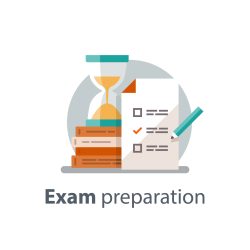
The IRS has issued new guidance for individuals who qualify for tip and overtime deductions
4 min read
SHOP THE WINTER SALE – Get deals across the digital catalog, conferences, credit packages, and more.

Getting ready for tax season can’t start early enough for tax return preparers, especially for those looking to participate in the IRS’s Annual Filing Season Program. Tax return preparers looking to upgrade their careers with credentials through the IRS Annual Filing Season Program can expect to complete the Annual Federal Tax Refresher Course (AFTR) and the accompanying comprehensive test. If you’re planning to earn or renew your AFSP Record of Completion, here’s your step-by-step guide to navigating this important professional milestone.

It’s worth noting that not everyone will need to take the AFTR course. Highly credentialed tax professionals are exempt, including:
If you don’t fall into these categories and want to participate in the Annual Filing Season Program, you’ll need to complete the AFTR course and pass its test.
The IRS does not directly offer the AFTR course. Instead, you must select from their list of approved Continuing Education providers. These CE providers can offer courses from June 1 through December 31 each year. When selecting a provider, consider what delivery format works best for you:
Remember that all AFTR courses cover the same required content, so focus on finding a format and provider that matches your learning style and schedule.

The AFTR course covers three essential domains:
Before starting the AFTR course, gather any materials you’ll need for notetaking and set aside uninterrupted time to focus on the content. The IRS provides an AFTR Course Outline for what CE providers should cover in each of the above domains. This course outline can also be a resource for participants to research or study what will be offered on the AFTR course ahead of participation.
The AFTR course is exactly six hours long—no more, no less. However, you don’t have to complete it all at once. Many providers allow you to break it into smaller sessions that fit your schedule.
As you progress through the course:
After completing all course sections, you’ll need to pass the comprehension test. Here’s what to expect:
If you don’t pass on your first attempt, you can usually try again. However, if you require a third attempt, at least 50% of the questions will be different from your previous tests.
Remember, completing the AFTR course and comprehension test is only part of the journey through the Annual Filing Season Program. It will be up to you to take the remaining CE and ensure that you’ve secured a PTIN. If all of this sounds like a lot of work, just remind yourself of the benefits. With completion of the Annual Filing Season Program, you’ll be added to the IRS’s Directory of Federal Tax Return Preparers, and you’ll have limited representation rights for your clients. Huge upgrades to any tax return preparer’s career and your visibility in the marketplace. Now that you’ve got a handle on how to complete the AFTR course and comprehensive test, we wish you the best of luck with your testing! You’re going to do great!
Subscribe to our news, analysis, and updates to receive 10% off your first purchase of an on-demand digital CPE course.